Ferragosto: Italy’s national holiday to launch summer holidays is my favorite time in Rome
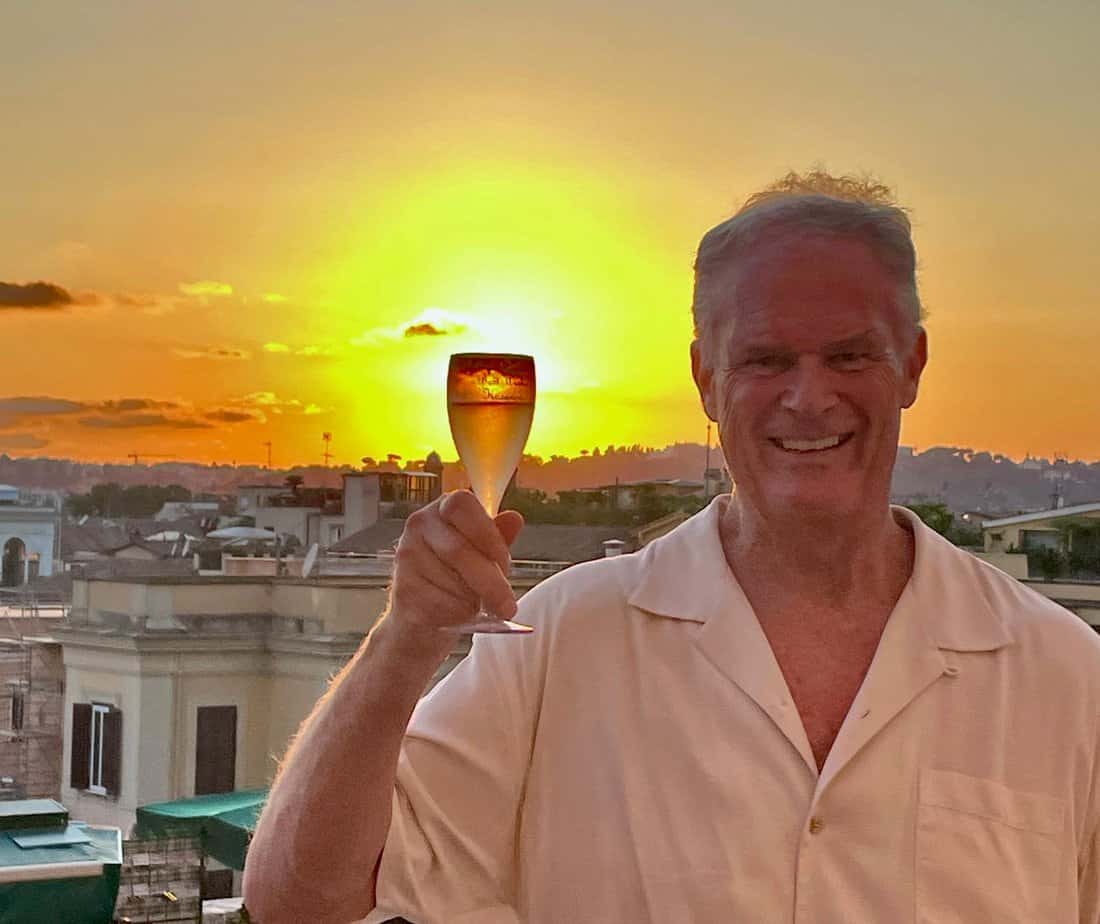
My street in Rome runs into a place called Piazzalle Dunant, a huge six-lane road divided by an island of trees. Normally, you risk your life crossing this street. No speed limit signs are in sight. Nor are stop lights. Traffic resembles an Instagram horror clip. We local residents are forever thankful a hospital is just up the hill.
On Tuesday, however, Piazzalle Dunant was as quiet as a country road in Calabria. Only a random car would whiz past me every five minutes. The only people on the streets were sitting at the two corner bars, drinking cappuccino and eating cornettos in the morning sun.
Birds chirped. Cicadas buzzed. A dog barked.

I walked down the street and up Via Donna Olimpia, one of the busiest retail streets in my Monteverde Nuovo neighborhood. Every single business was closed. Every. Single. One. It was a long line of iron gates.
This reminded me of Italy’s two Covid lockdowns when this city that gets 10 million visitors a year put up its Roman walls and closed everything inside them. But Covid has not returned. It was no emergency.
Tuesday just happened to be my favorite day of the year in Rome.

Monteverde
It’s called Ferragosto. It’s the day all of Italy shuts down. Aug. 15 is a government holiday marking the start of Italy’s summer holiday season. Italians from Sicily to the Alps close up shop and head to the sea or mountains. It leaves the rest of the country to tourists and savvy expats who love roaming around a half-empty major metropolis with a million things to see.
I had a lovely morning walk. Most businesses had little hand-drawn square notices reading CHIUSO PER FERIE (CLOSED FOR HOLIDAY) with the dates of closure. A dry cleaner read Aug. 7-27. The Ristretto Bar had Aug. 14-20, my butcher wrote Aug. 13-30. Some closed earlier to take advantage of the Monday after the weekend. Others will reopen later, by choice.
I walked up Via Ozanam to my local Mercato di Giovanni di Dio. It’s the public market where I buy the freshest produce, cheese and fish around. It’s a loud, scruffy, rough and tumble scrum where the Roman dialect is the main mode of communication.
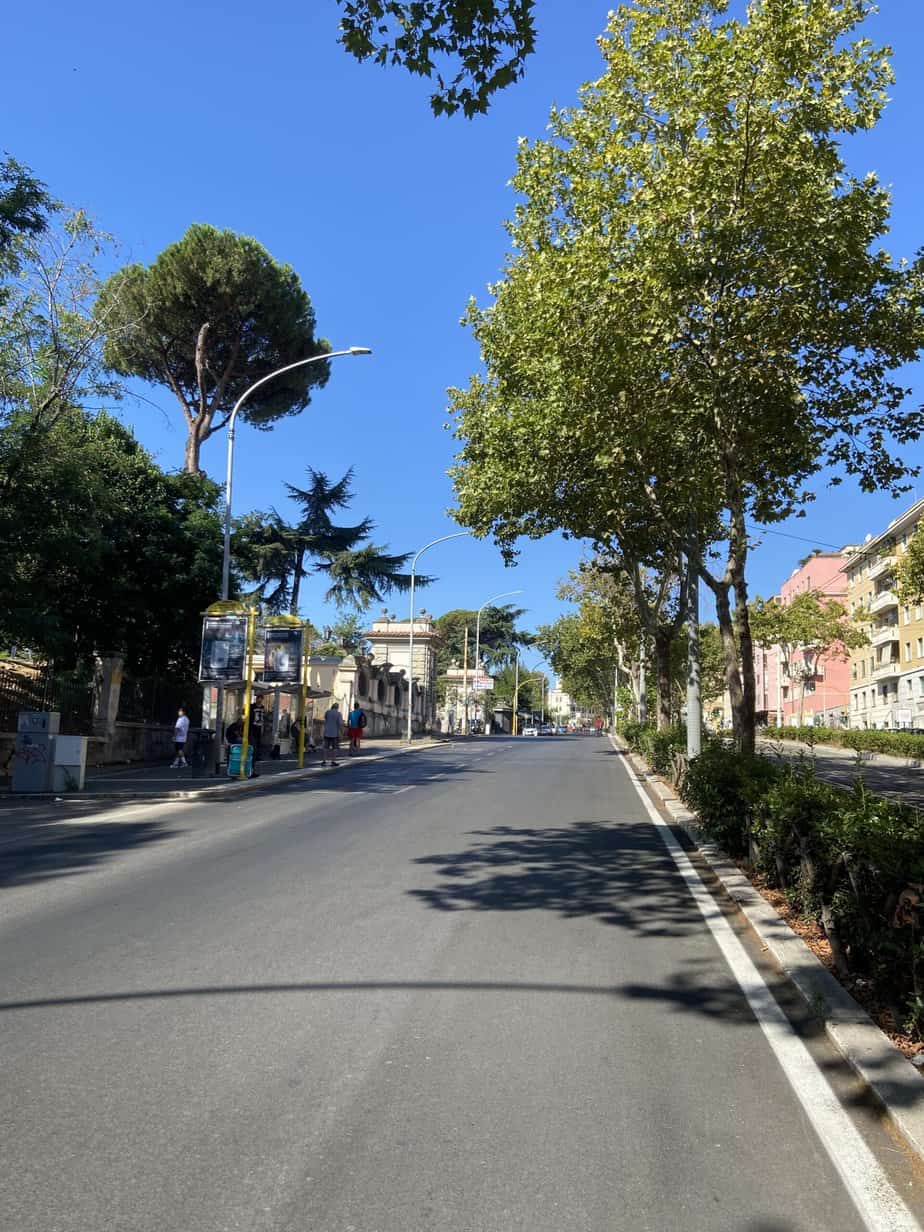
On Tuesday mid-morning the sprawling market looked dark and foreboding. The long corridors were empty. The stalls were locked and barren. It looked like a great place to hide a body.
I don’t follow the crowds on Ferragosto. The beaches look like Coney Island on hot summer days in the ‘50s. And the traffic is worse. As I’m writing this the next day, I’m sure there’s some poor sap out there still trying to find a parking space.
Instead, I stay and walk around my favorite city in the world. And on this day, Rome is like two different cities: one for residents and one for tourists who didn’t get the memo.
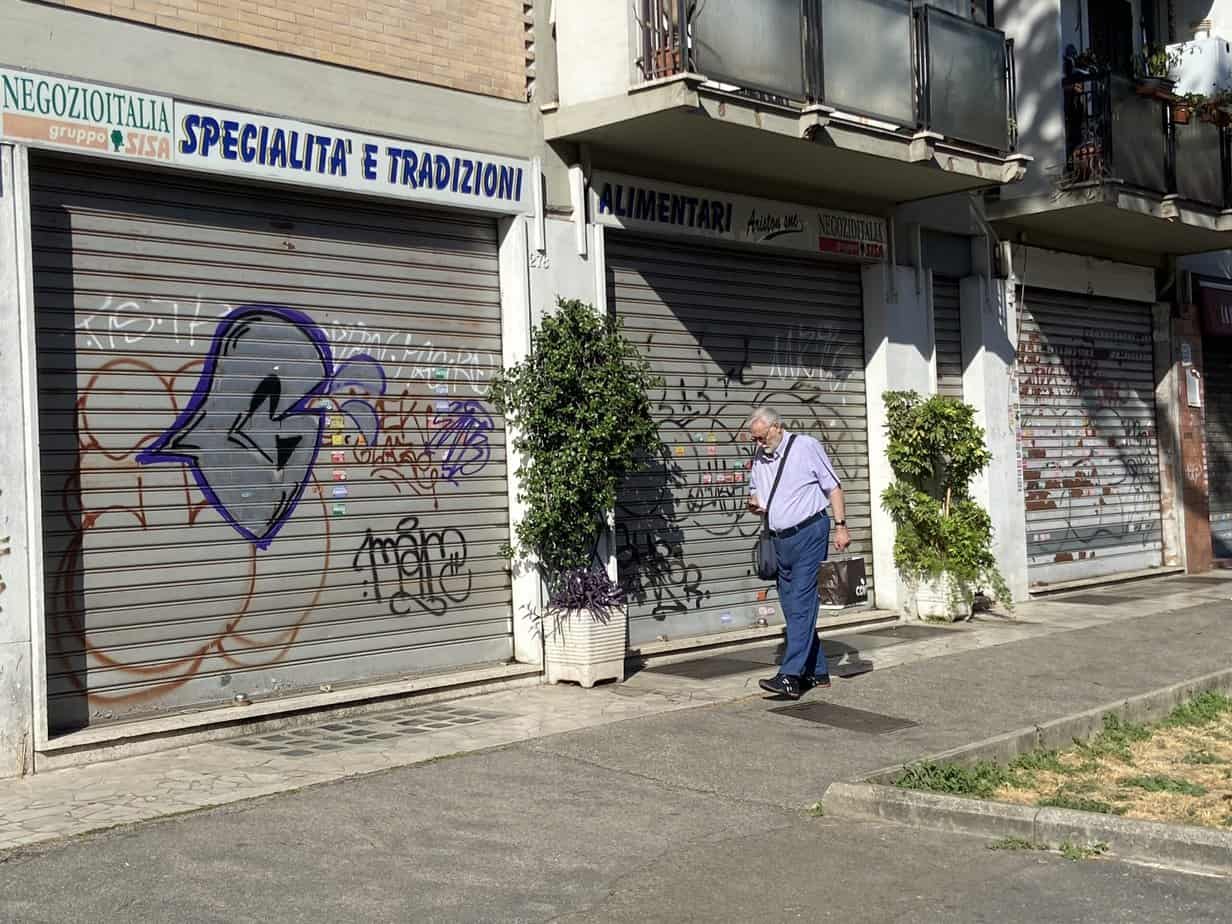
Ferragosto history
Ferragosto began and was promoted by two men on the opposite ends of Italian history’s moral spectrum: Caesar Augustus and Benito Mussolini. Augustus, Rome’s first emperor when it transitioned from a republic to an empire, was considered one of the most benevolent emperors in history. Ferragosto confirmed it.
He called it Feriae Augusti and declared the first of August, the month named for him, as a day of rest for everyone working for weeks on farms. He also called for them to receive bonuses. Not only did he want his workforce to rest, but he ordered oxen, donkeys, mules and other work beasts to be released from any duties. Locals decorated them with flowers, which, no doubt, irritated said work beasts. The exception was horses.
For entertainment, Augustus held horse races.
The tradition continued during the Renaissance when Siena started the Palio, a wild horse race where local men representing the town’s various neighborhoods race bareback around the town’s Piazza del Campo. The Catholic Church moved Ferragosto to Aug. 15 to correspond with the Assumption of Mary, the day the Virgin Mary allegedly ascended to heaven.
During Mussolini’s reign in the 1920s, he not only made sure the trains ran on time but he also created holiday trains for poor Italians to visit cities and the sea on low-cost tickets from Aug. 14-16.
Today, it’s estimated that 90 percent of Italian businesses close Aug. 15 and most don’t open until month’s end. Italians who don’t flee to the seas and mountains traditionally have a major feast at home. It’s usually in the yard or balcony with massive amounts of food and wine and family.
In that spirit, on this day Rome’s tourists still get fed.
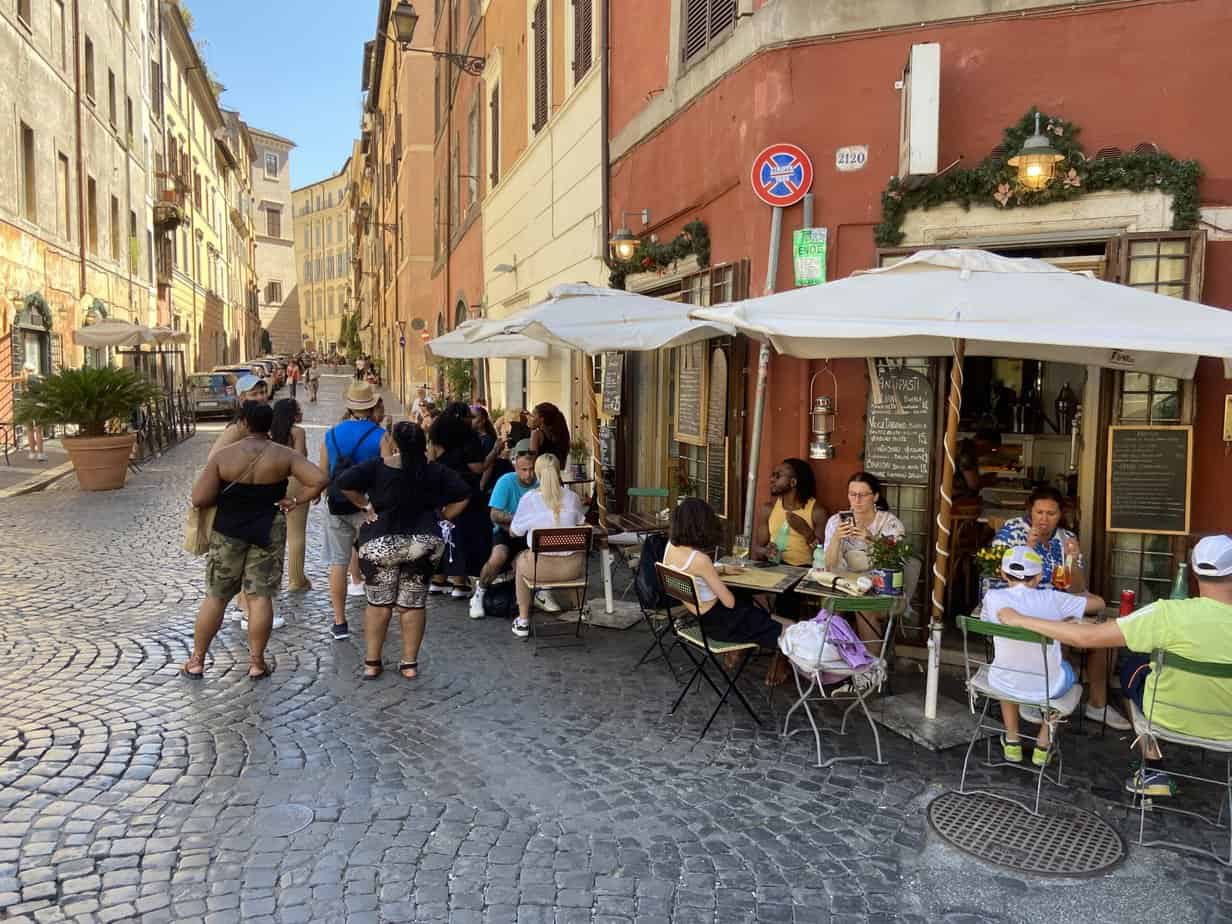
Centro Storico
I took a mercifully half-empty bus 10 minutes to Centro Storico, Rome’s hopping historical district. I walked down Via Giubbonari leading to teeming Campo de’ Fiori and it was a sea of white fedoras. Those are the hats tourists wear that tell pickpockets what pockets to pick that day.
On Giubbonari all the boutique clothes stores were open. Scarves and gloves and blouses were on display in air-conditioned shops. Roscioli, a hugely popular shop of designer meats popular with the lunch crowd, was surprisingly closed.
Campo de’ Fiori hadn’t changed. The huge piazza, which started as a flower market in the 15th century and has since evolved into a neighborhood food market, was open for business as usual. Tourists perused long stands of limoncello and dry pasta and olive oil.
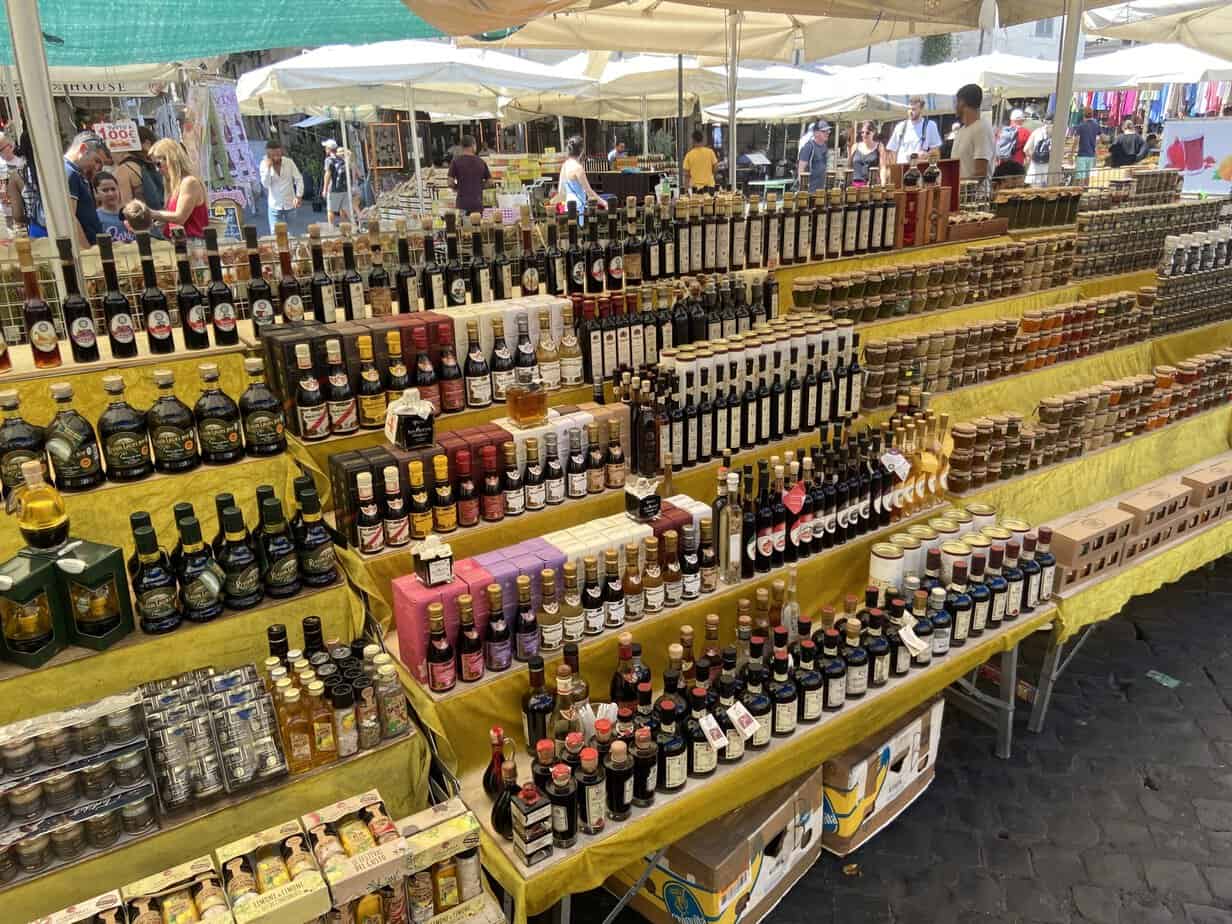
All the touristy restaurants ringing the piazza were open. The Sciam hookah bar where I occasionally grab a puff on my way home was open. Osteria da Fortunata, maybe the most popular restaurant in Centro Storico, already had a line at 1 p.m.
I heard American English. British English. Spanish. German. Various East European languages. Two obese Americans walked by me in Sex On the Beach and Venice T-shirts. With the weather at 86 degrees with 48 percent humidity, I saw a lot of short shorts, cleavage and tans.
A few restaurants in the Center were closed. My soccer bar, Abbey Theatre Irish Pub, was open. So were art stores, souvenir stores and gelaterias.
The touristy restaurants, the ones with menus even in Hmong, were packed. I found a little place on a side street off the main drag of Corso Vittorio Emanuele. I called Marina and had her meet me at Navona Bistrot where we sat next to a German couple and I had a couple of ice-cold Peroni Gran Riservas at 6.6 percent alcohol. She ordered grapefruit juice.
We had more than one toast to Ferragosto.

Testaccio
After eating a passable focaccia with prosciutto, I had Marina drop me off in my old neighborhood. Testaccio is one mile south of Centro Storico but a million miles away aesthetically. It’s a Roman neighborhood for Romans. Two big piazzas anchor it with one of the city’s best public markets near Mattatoio, once the biggest slaughterhouse in Europe.
Normally, the piazzas are buzzing with activity. Fathers and sons kick soccer balls. Women gossip on benches. Old men read newspapers under shady trees. People dine in the plethora of outdoor restaurants.
Tuesday, Testaccio looked like nuclear fallout without the destruction. I barely saw a soul. Piazza Testaccio was nearly barren. Birds couldn’t find a speck of discarded bread to eat. In Piazza di Santa Maria Liberatrice, I saw only four men sitting on different benches with their dogs.
At night, I threw myself back in the maw. I met my friends, Tom and Ilaria, in Piazza Spagna, jammed year round. Many of the Murderers Row of fashion stores – Gucci, Prada, Dior – remained open. I could feel the AC pouring out of the elegant shops as I passed.
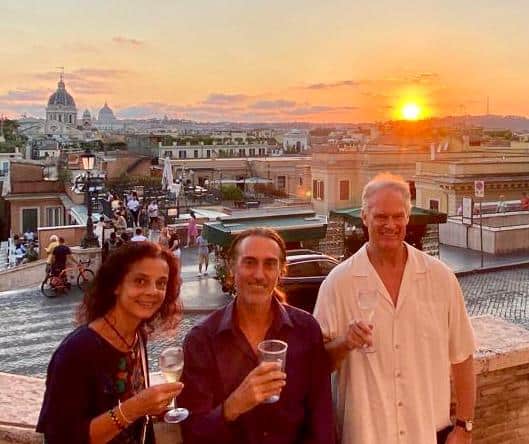
The three of us walked up the 135 Spanish Steps, half filled with tourists, to the top where the foreground of twin-towered 500-year-old Chiesa della Trinita dei Monti offers one of Rome’s best sunset views. Tom, a connoisseur of fine wine and Italian craft beer, opened a bottle of Fiano, still chilled from a 40-minute emergency stop in his freezer.
We clinked glasses, toasted Ferragosto and stared at the gold fireball descending behind the roofs of Rome. We hiked up over hoity-toity Via Veneto to a little restaurant called Il Fellini. On the walls were huge black and white photos of director Federico Fellini’s most famous actors such as Marcello Mastroianni, Gina Lollabrigida and Monica Vitti.
I had a wonderful duck ravioli in crumbled walnuts with a nice Cesanese del Piglio from right outside Rome.
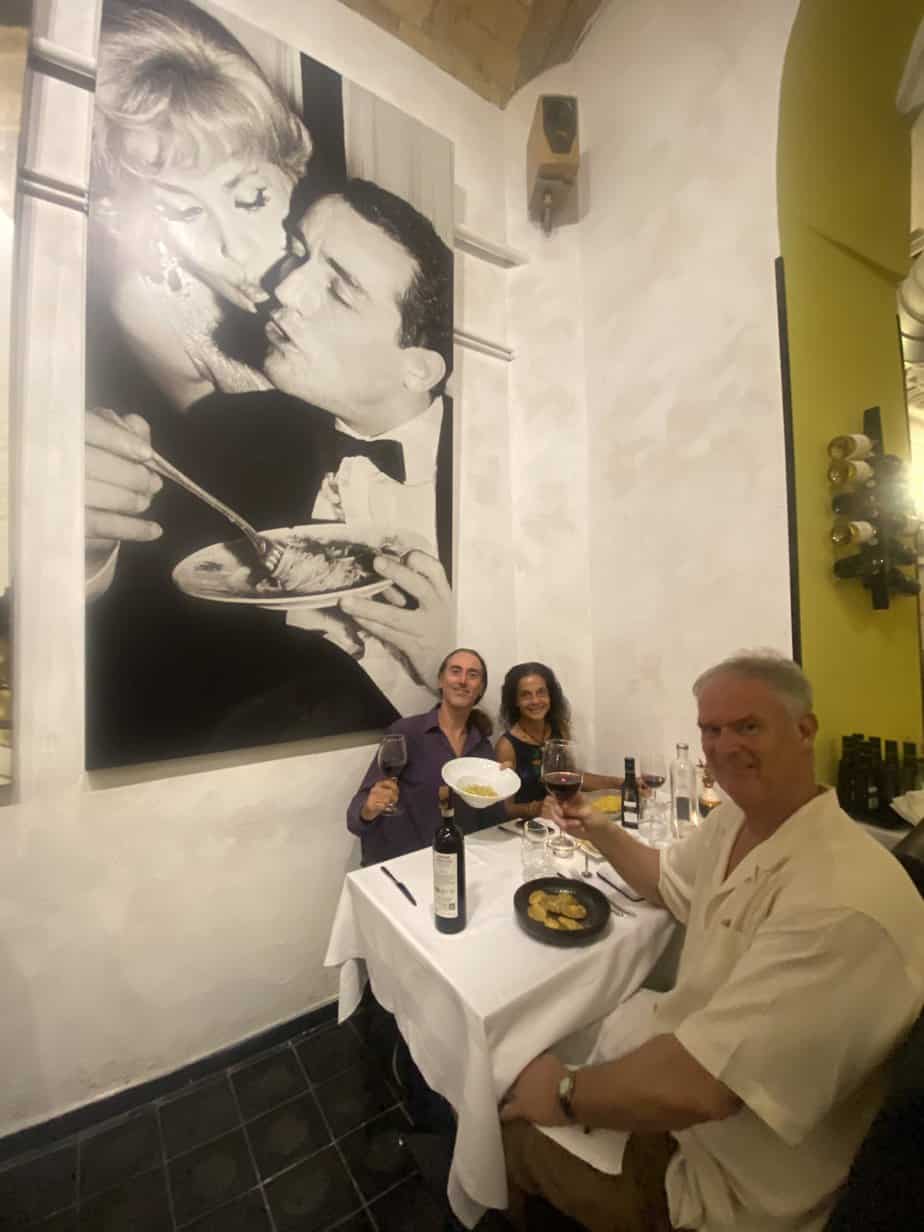
It’s days like this that remind me of why I live here. It’s quiet solitude mixed with Rome’s astounding beauty, surpassed only by its food and wine, all available on a day designed to give liberty to all.
Thanks, Augustus. Great idea.


August 16, 2023 @ 11:35 pm
Another fabulous insight into Roman Life
Thank you John
August 17, 2023 @ 8:07 am
Thanks, Joanna. The best writing always comes from the heart.
August 17, 2023 @ 2:33 pm
Great job John…as always!